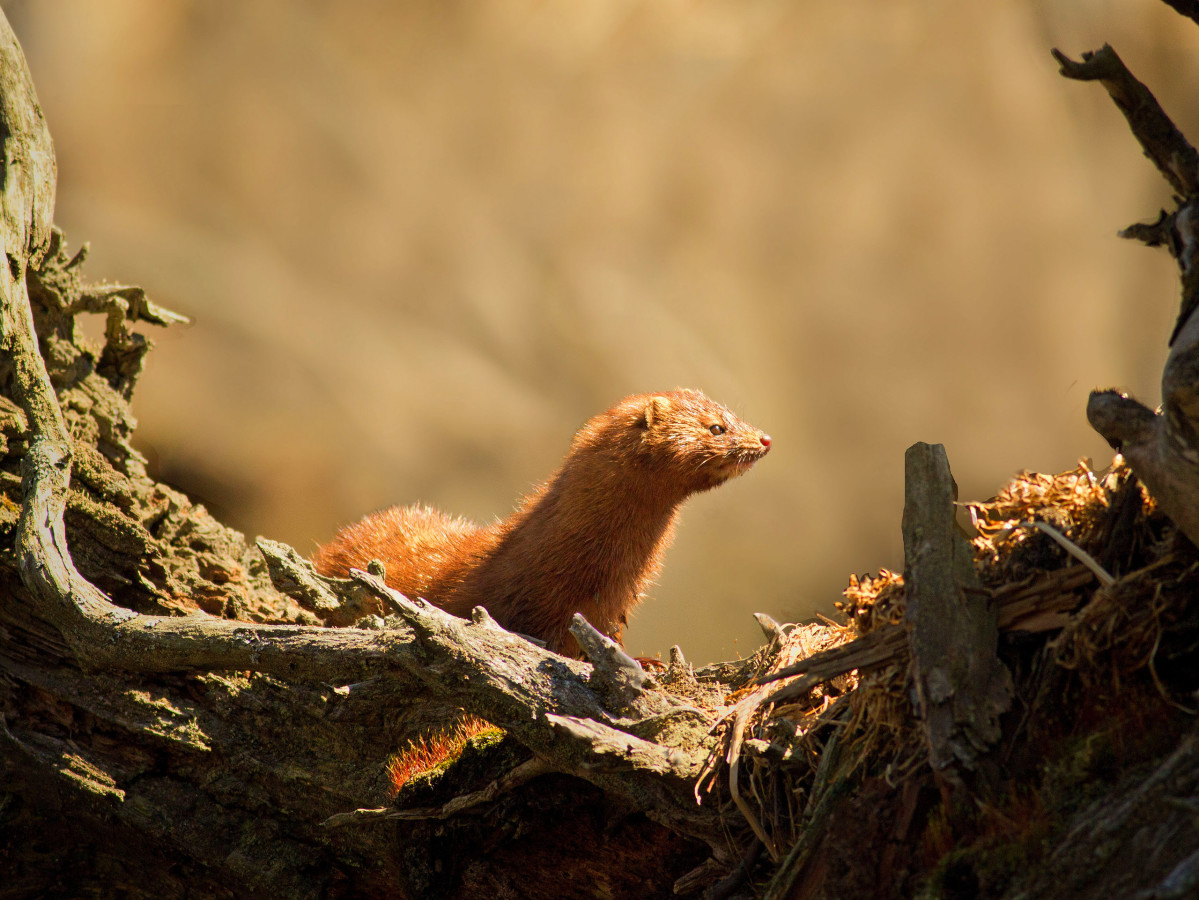Several members of the family Mustelidae are native to New York State: fisher, marten, two kinds of weasels, river otter, and American mink (Neovison vison).
These animals differ in size but otherwise look quite similar to each other, with long, narrow bodies; tiny, rounded ears; dense fur; and well-developed anal glands. All of our native mustelids are cute, but the mink, with its curious, alert face and shiny, button-like brown eyes, looks especially like a toy. Don’t be fooled, though: it punches far above its weight of a mere one to three pounds.
The long, narrow body of the mink allows it to hunt successfully in many different environments. It prefers to be in or near water, and slips as easily as an eel after fish, frogs, crustaceans, and muskrats. It can wiggle into burrows to catch rodents – it has occasionally been tamed and used to hunt rats – or shimmy down holes to grab snakes. Its bounding, rolling gait is comical, but it is fast enough to catch rabbits and birds. Amazingly, it does not seem to be handicapped by its tiny head and jaws and doesn’t hesitate to attack animals several times its own size.
Because mink sometimes wreak havoc in henhouses, destroying entire flocks at once, people assume that they kill for pleasure. This behavior is not completely understood, but probably has more to do with physics than hedonism. The same body shape that makes the mink such an agile, adaptable predator also has a high surface-area-to-volume ratio that leaves the animal extremely vulnerable to heat loss. In order to stay alive, it must eat a third of its own body weight every day, and since it is a solitary animal, it must find food on its own. The problem is compounded when the temperature drops, because the mink does not migrate, hibernate, enter torpor, or stockpile a significant amount of food in winter. Perhaps because it must remain light and sleek in order to hunt effectively, it doesn’t store much body fat, either. In order to gain a little more food security, it may kill more than it can eat at one time and cache the rest under the ice and snow. The mink that kills all of the chickens in a coop and leaves the carcasses lying around is probably only following its instinct to kill whatever, and whenever, it can – after all, in the wild, animals do not live in large densities inside small spaces that have no escape routes.
The mink is of course synonymous with its thick, glossy, dark brown fur (domesticated mink, which are larger and less hardy than wild mink, have been bred for many different coat colors). Hundreds of thousands of mink pelts were exported to Europe between the seventeenth and nineteenth centuries; when the price was not high enough to justify the transport costs, the pelts were simply burned at the trading posts. Its cousin, the sea mink, was driven to extinction by this merciless overexploitation, but the tough little American mink somehow managed to ride out the era of the fur trade. In fact, the animal still apparently occupies the same range that it did before Europeans arrived in North America, endemic to most of the U. S. (with the exception of the arid southwest corner of the country) and almost all of Canada. Today, the most serious threats to the mink come from the destruction of wetlands and water pollution. Because of its position at the top of the food chain and its extreme sensitivity to toxins, the mink is a bioindicator for aquatic environments. A study is currently underway to measure how PCBs in the Hudson River are affecting the species.
The story of the mink has taken an ironic twist. When mink fur became extremely fashionable in the early and mid-twentieth century, fur farms stocked with American mink were established in many areas of Europe. Over time, animals escaped (or were deliberately released by animal activists) and established themselves in the wild. The American mink is now a serious pest in Europe, where it is contributing to the precipitous decline of native species. One of the hardest hit is the European mink, which is now critically endangered.


